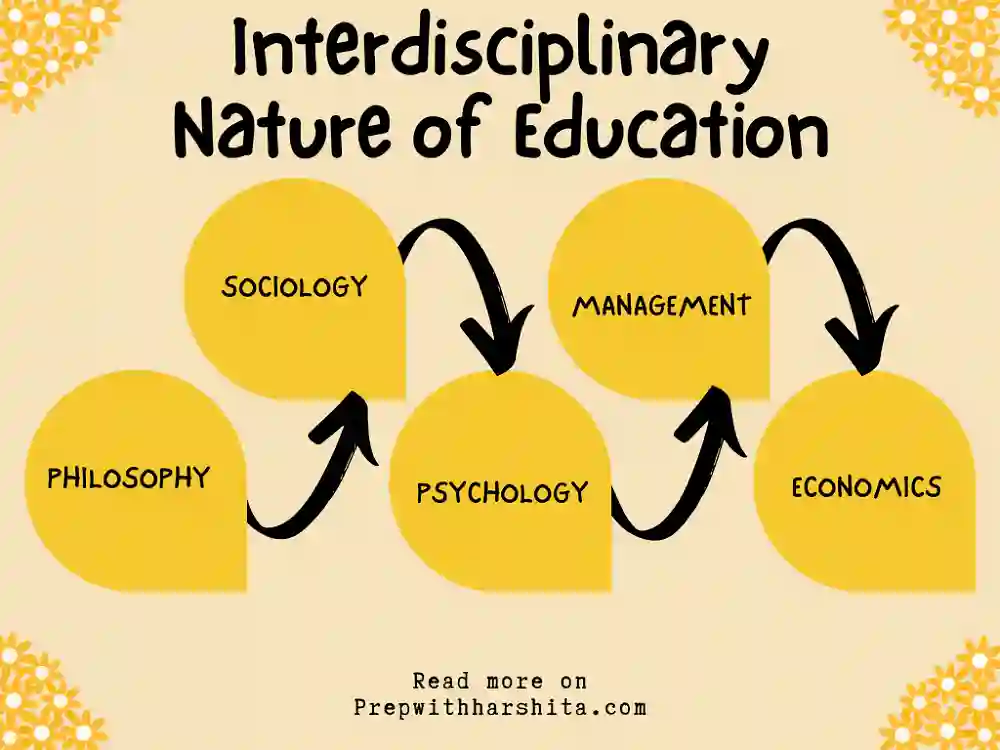The Importance of Interdisciplinary Learning in Schools

Look, I’m not saying that every student needs to build a rocket ship in their 10th-grade science class, but—hear me out—the importance of interdisciplinary learning in schools is like putting peanut butter and jelly together. Sure, they’re good on their own, but they’re even better when they work together.
You see, in a world where problems don’t come in neat little subject boxes (I’m looking at you, climate change), we need to teach kids how to juggle different ideas. This isn’t just about throwing a bunch of subjects together and calling it a day. It’s about helping students understand how things connect. Spoiler: They’re all connected. The importance of interdisciplinary learning in schools is huge—and not just for getting good grades.
What Is Interdisciplinary Learning?
A Quick Breakdown
Alright, let’s start at the very beginning. I didn’t even know what “interdisciplinary learning” was when I first heard it. I was like, “What’s that? Do I need a fancy dictionary?” Well, turns out, it’s just the fancy way of saying that subjects don’t live in isolation. Math? Meet Science. History, say hi to Literature.
So, instead of just learning about the American Revolution in history class and doing math problems in another, you combine them. A project about the Revolution? You might calculate the costs of war (math), write a persuasive speech (English), and maybe even paint a battle scene (art). It’s like a big learning buffet, but with actual value.
Why It Matters: It’s More Than Just Fun and Games
The Power of Critical Thinking
Now, the importance of interdisciplinary learning in schools isn’t just about getting kids to look busy. It’s about making them think. You know, really think. Remember the first time you tried to figure out how to set up your Wi-Fi? It’s kinda like that, but in a school setting.
When students have to approach problems from different angles, they’re forced to really analyze things. What does a math problem have to do with writing a poem? Trust me, they’ll figure it out—and the lightbulb moment is always a proud one. I learned the hard way that the best solutions aren’t always found in a textbook. Sometimes, they’re discovered when you throw a bunch of random subjects together and see what sticks.
Problem-Solving, But Make It Real-Life
Okay, let’s get real for a second. Not everything in life fits into neat categories. You’re not always going to find just “math problems” or “history facts.” Sometimes, you’ll need to think like a mix of things—just like how a pizza chef uses both creativity and precision. When students work on interdisciplinary projects, they’re getting ready for life outside the classroom, where things aren’t always cut and dry.
The importance of interdisciplinary learning in schools is that it builds students’ ability to approach challenges from all sides. Real-world problems rarely come with a “Subject: Math” label on them. They’re more like, “Hey, figure out how to make this work,” and that’s where this method shines.
Why Students Benefit
Engagement? Check.
I’m not going to lie. School can get dull. Remember that one math class where you just couldn’t keep your eyes open? I’ve been there. But when students get to work on projects that make real-world connections, suddenly, it’s like you’ve unlocked a new level of engagement. I remember the first time I built a rudimentary robot in high school for a combined science and tech project. It was way cooler than my math homework—and I still tell people about it to this day.
Learning Styles—We All Have One (Or Two, Or Five)
Everyone learns differently. Some of us need to see things to understand them. Others need to move around and try things out. The importance of interdisciplinary learning in schools is that it hits all of those learning styles. Whether you’re building a model, creating a presentation, or writing a report, there’s something in there for everyone.
Personally, I’m a hands-on learner. The day I realized I could learn math through baking cookies? Life-changing. The oven was a better teacher than any textbook I’d ever read. (Note: Do not follow my cookie recipes, ever).
How Do Teachers Make It Work?
Start Small
Look, no one’s expecting you to reinvent the wheel. Start with something small. Maybe a unit where students explore the concept of “energy.” You could look at energy in science (hello, thermodynamics), math (calculating efficiency), and even literature (writing stories about the future of renewable energy). By adding layers, you show students how everything connects—no need to start with a 15-subject project. Baby steps.
Teamwork Makes the Dream Work
The real magic happens when teachers get together and collaborate. When science and English teachers team up for a climate change project? You get pure gold. This isn’t just about doubling the work; it’s about doubling the fun—and letting students see how different subjects work together.
(Also, shoutout to Mr. J—my high school history teacher—who always encouraged us to look at the “big picture.” He was always way ahead of the curve.)
What Are the Challenges?
Time, Sweet Time
Okay, let’s be real. Teachers are busy. They’ve got a million things on their plates, and adding interdisciplinary planning to the list is like asking them to juggle flaming swords. But! The importance of interdisciplinary learning in schools really does make it worth it. Sure, it’s a challenge, but when students start connecting the dots, it’s like fireworks going off in your brain. It’s totally worth the effort. Plus, you don’t have to go all-in right away. Small changes? They make a big difference.
Curriculum Boundaries—They’re Not Set in Stone
Some schools stick to rigid curricula. But that’s not a reason to back down from the importance of interdisciplinary learning in schools. Even one project per term, where subjects collide in a beautiful mess, can change the way students think. Remember: boundaries are for fences, not education.
A Few Success Stories
Finland’s Got It Figured Out
Finland doesn’t mess around when it comes to education. They’ve taken the importance of interdisciplinary learning in schools to the next level with something called “phenomenon-based learning.” Basically, they’re teaching kids to look at problems holistically. And guess what? It’s working. Finland’s students are known for being some of the most well-rounded, well-prepared kids on the planet.
STEAM—More Than Just a Cool Acronym
In the U.S., schools are jumping on the STEAM train. That’s Science, Technology, Engineering, Art, and Math. Sounds complicated, but really, it’s just a fancy way of saying, “Let’s throw some creativity in with all that science and math stuff.” The importance of interdisciplinary learning in schools is pretty obvious here—kids who understand how all these subjects work together are going to be better prepared for anything the future throws at them.
The Bottom Line
So, here’s the deal: the importance of interdisciplinary learning in schools is undeniable. It helps kids think critically, solves problems, and prepares them for real life. It’s not just about the subjects themselves; it’s about showing students that everything’s connected. From math to history to art, it’s all part of the same puzzle. They just need to learn how to put the pieces together.
And hey, even if your school’s not ready to implement this everywhere, you can still sneak in a little interdisciplinary magic. Maybe your next project could be about the science behind your favorite movie. Or an essay on why your dog might be smarter than you. That’s learning too, right?
Anyway, next time you’re in class (or having a random conversation with a friend), just remember: the importance of interdisciplinary learning in schools isn’t going anywhere. And that’s a good thing.







